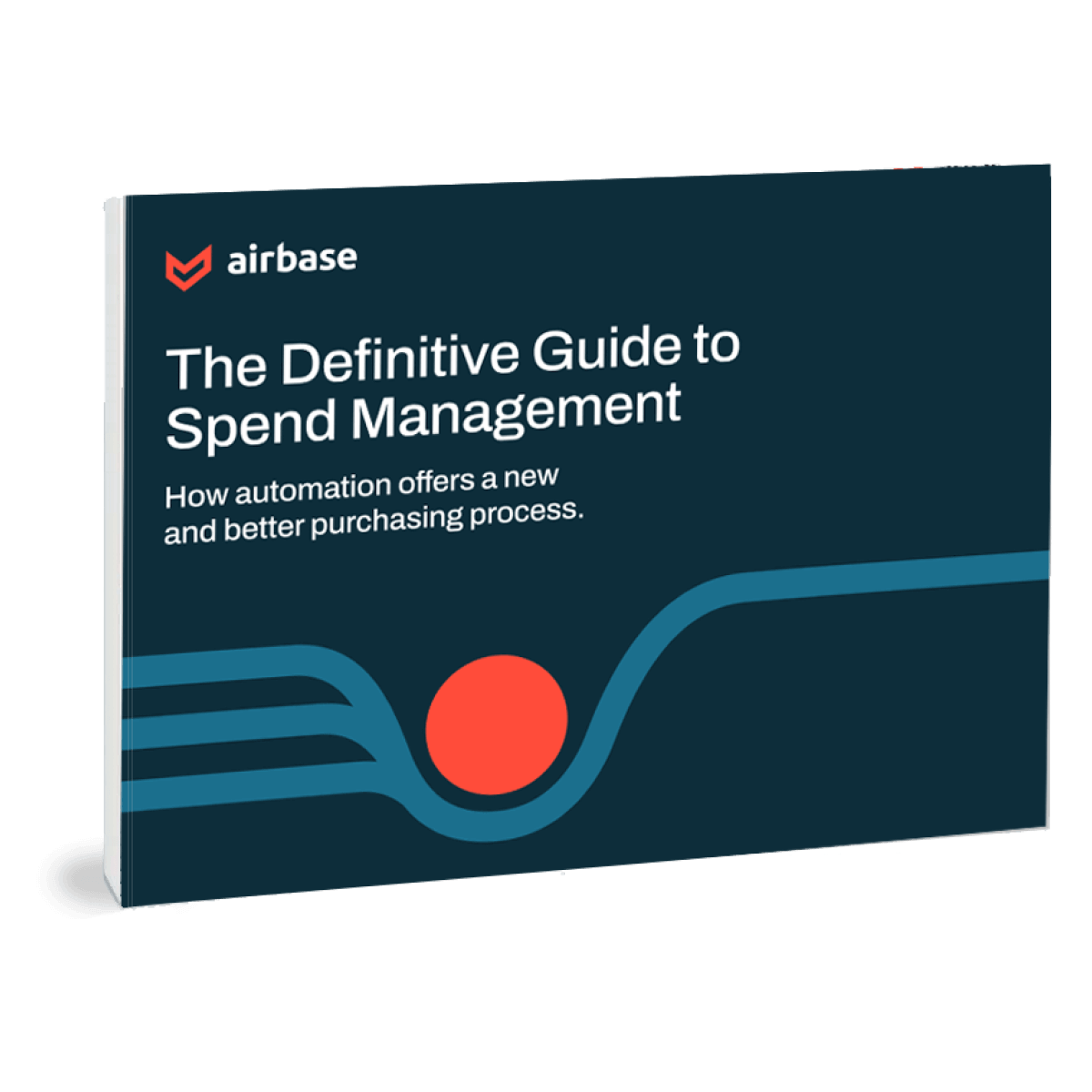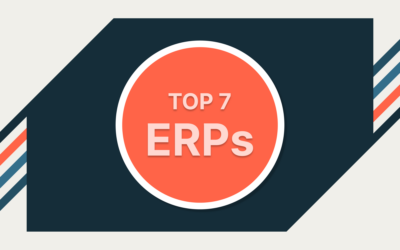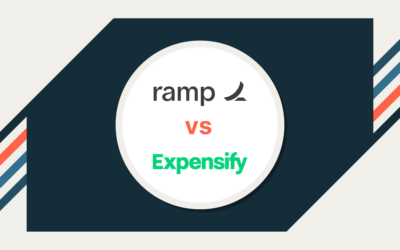Indirect spend accounts for roughly 40% of total company spend, and it increases by 7% annually — are you keeping it under control?
Organizational procurement breaks down into two broad categories: direct and indirect.
Indirect procurement is a decentralized process where employees and departments purchase goods and services that contribute to the day-to-day operations of a business. Examples of indirect spend are office supplies, utilities, accounting services, IT support, travel expenses, advertising, etc. These procurements aren’t directly linked to producing the company’s goods or services, but they are necessary to operations — and they affect the company’s profitability.
Direct procurement, on the other hand, is a centralized process where goods and supplies are purchased for production (cost of goods sold).
Companies typically focus most of their efforts on direct spend management even though, on average, indirect procurement accounts for 35-45% of total company spend.
If indirect spend is eating away at your revenue, it’s time to get it under control by streamlining how you manage it.

Understanding direct and indirect procurement.
Direct procurement is the process of purchasing goods and raw materials that directly contribute to the production of the company’s products or services. In other words, it’s a major part of the cost of goods sold (COGS). For example, if your company manufactures cars, your direct procurement includes all of the tech, raw materials, and parts that go into producing those cars.
Indirect procurement, on the other hand, keeps the lights on while you build those vehicles. It’s the overhead spend that fuels operations but it doesn’t directly relate to the final product. Think office equipment, rent, marketing, T&E, and utilities.
Regardless of how you break down your procurement, indirect spend has an outsized impact on business efficiency and profitability. Poorly managed indirect procurement processes lead to:
- Budget overruns.
- Supply chain disruptions.
- Duplicate purchases.
- Non-compliance with contracts and vendors.
- Reduced profits.
As we mentioned earlier, indirect procurement can contribute to nearly half of a company’s overall expenses. So effective, intentional indirect spend management is essential to smooth operations and budgeting that doesn’t eat too much into profits.
Optimizing indirect procurement: 5 Tips to manage indirect spend.
Ready to get your indirect costs under control?
Use these tips and best practices to spend wisely on indirect costs:
Tip 1: Conduct a spend analysis.
Before you can manage indirect spend, you need to figure out what, when, and where it is. A comprehensive spend analysis shows you:
- Where the money is going.
- What it’s used for.
- Where you can potentially cut back.
Think you already know where all of your money is going?
So did Delta Airlines.
But each of Delta’s hubs operated independently, so the company had no real bird’s-eye view of overall indirect spending. A detailed spend analysis revealed extensive cost-cutting opportunities that saved the organization $millions. In fact, after acting on the findings, Delta saved $11 million on hotel rooms alone in just three months.
Step by step, here’s how you analyze your spend:
Collect data and clean it up:
The expression “garbage in, garbage out” really applies here. Getting the foundation right is important. Gather the numbers and double-check them to make sure they’re accurate. Collecting data from across the company:
- Invoices
- Receipts
- Expense reports
- Purchase orders
You’ll likely end up with some duplicates, errors, and inconsistencies, so factor in some time to clean up this raw data to make it usable.

Categorize and classify:
Once you have clean, accurate data, organize it into precise categories, such as travel expenses, IT services, utilities, office supplies, marketing expenses, etc. The more detailed the better, as this gives you granular insight into each dollar spent.
Analyze and visualize data.
For this step, a powerful analytics tool like Airbase makes the data visual so it’s easy to extract valuable insights. Here, you’re looking for:
- Spend patterns.
- Outliers.
- Duplicate purchases.
- Unnecessary or zombie spend.
- Other cost-saving opportunities.
Supplier performance analysis:
Finally, evaluate your vendor contacts. Look at performance to identify where you’re not getting good value for your money. Then leverage this supplier performance analysis to:
- Negotiate better contracts.
- Choose preferred vendors (more on this later).
- Strategically source goods and services.
Tip 2: Standardize procurement policies and automate approval workflows.
Hopefully, your procurement workflows aren’t a free-for-all, but even an organized indirect procurement process benefits from company-wide standardization. Structured procurement policies and automated approval workflows (that apply to everyone across the board) keep you in compliance and give you tight control over all spend.
They also deliver a better employee experience — something Recharge can attest to first-hand.
The e-commerce company’s procurement and purchase approval workflows were complicated, clunky, and completely manual. Their CMS used sequential approvals, and only a few employees had access to the system.
Making a purchase went like this:
- An employee had to go through a manager with CMS access.
- The manager had to manually input the request.
- Then it was up to the employee to chase down each stakeholder for approval to keep the process moving along.
Obviously, this wasn’t ideal — so Recharge implemented Airbase’s Guided Procurement module to streamline workflows and empower employees, while also gaining greater control over spend.
A standardized, effective procurement policy should check off these items:
- Clearly define roles and responsibilities. Outline who can make purchasing decisions for different departments and place individual limits on spend amounts.
- Establish approval workflows. Break down approvals by spending level, rather than just department or product type. You don’t want to create a 10-step approval process to purchase coffee for the break room, but you also don’t want to give IT free rein to license a $15k software solution.
- State preferred vendors. Here’s where you list approved or preferred vendors (up next) and criteria for choosing new suppliers or professional services providers (e.g., price, delivery time/cost, quality, customer service, etc.).
- Ensure regulatory compliance. Policy must keep pace with your industry’s compliance statutes and any applicable internal and external regulations, such as SOC2 or HIPAA.
Tip 3: Develop preferred supplier relationships.
We’ve already touched on this aspect a few times, so let’s dig into it a little further.
First, break down vendors into “approved” and “preferred.”
- Preferred vendors are those you’ve established a relationship with already and, well … you prefer. They deliver proven value and quality at a cost-effective price point, so they’re your go-tos for purchases.
- Approved vendors are your vetted backups. If a preferred vendor can’t get you the parts you need on time or doesn’t offer a specific solution, turn to your approved vendor list to find an alternative.
Clear, accessible preferred and approved vendor lists make it easy for procurement teams to source goods and services and ensure that those purchases align with company standards regarding quality and price.
And when your company regularly uses the same vendors and establishes positive long-term relationships with them, those vendors are more likely to award favorable contract terms that translate to cost savings and competitive advantage.
Tip 4: Set and monitor the right KPIs.
Procurement key performance indicators (KPIs) measure everything from vendor quality to compliance to order cycles. They give both broad and granular insights into your spend and highlight inefficiencies.
This is by no means an exhaustive list but these are some of the top indirect procurement KPIs you should continuously monitor:
Spend under management (SUM):
The percentage of total spend that finance and procurement teams control — in other words, non-maverick spend. The more spend you can bring under management control, the easier it is to rein in spending.
Cost per invoice:
This KPI has nothing to do with the actual cost of goods and services. It measures how much it costs you to process invoices. Tracking cost per invoice reveals where you could streamline accounts payable and procurement processes to cut down on processing time and avoid unnecessary fees.
Supplier lead time:
Optimize your supply chain and reduce emergency purchases by shortening the timeline between purchase and delivery as much as possible, either by choosing a faster vendor or negotiating new delivery terms.
Procurement ROI:
Procurement return on investment quantifies your cost-saving efforts and tells you how well they’re working. If your procurement ROI starts dropping, it’s time to take another look at your processes to see where you could make potential improvements to your indirect procurement strategy.
There are plenty of other valuable KPIs that offer insight into indirect spend, so choose the ones that fit your specific needs. And remember, tracking these metrics should be an ongoing process, not a one-time project.
Tip 5: Leverage a guided procurement platform.
We’ve talked about how a dedicated software solution automates a lot of your cost management tasks and processes — the more comprehensive and integrated your procurement platform is, the more insight and control you’ll gain.
Airbase’s procure-to-pay solution unites AP workflows, expense management, corporate cards, and guided procurement into a single platform for complete visibility and control.
Customizable algorithms and clear-cut procedures automate your AP processes, data analyses, procurement processes, approvals, and more. And with Airbase’s advanced analytics, you gain deep insights into spending inefficiencies and cost-saving opportunities.
The result?
Effective, standardized procurement workflows that are simple to use and proactively control your indirect spend.

The Definitive Guide to Spend Management
See how automation offers a better purchasing process.
Key takeaways on managing indirect spend.
Getting on top of indirect spend management makes operations more efficient — and that translates to a healthier bottom line. It starts with a comprehensive spend analysis and standardized procurement and approval workflows. From there, you sort out and develop your preferred vendor relationships and monitor KPIs that inform expenditures from all different angles.
A dedicated procurement platform saves you time, ensures company-wide compliance with direct and indirect procurement policies, and uncovers cost-reduction opportunities, giving you unparalleled control over your indirect spend.
Airbase’s comprehensive procure-to-pay solution has the tools and insights you need to get your indirect spend — and all your other expenses — under control. Schedule your free demo today and see what a best-in-class procurement platform can do for your budget.
FAQ.
What is procurement direct vs indirect spend?
Direct spend and indirect spend are two different ways companies buy goods and services for the company. They are both procurement methods. Direct spend relates to materials a company needs to produce their own product or service intended for customer sales. Indirect spend covers expenses that keep the company running but don’t tie directly to the company’s main product. Indirect spend includes things like office supplies or rent that sustain the business behind the scenes.
What are the goals of indirect procurement?
Indirect procurement can be optimized by reworking internal operations to lower the number of purchases on the periphery and build relationships with suppliers for better contract terms. To do that, you need to analyze your supplier base, supply chain, and overall business goals.
What is direct procurement in procurement?
Direct procurement, sometimes known as direct spend, is what you buy to make your product or service so you can sell it to your customer base. It includes any raw material directly related to manufacturing your good for the end-user. Procurement professionals tend to automatically have more control over direct procurement, which is why it’s important to focus on tightening up the indirect procurement process.
 Jira Integration – Streamline Your Workflows
Jira Integration – Streamline Your Workflows  Ironclad Integration – Simplify Legal Operations
Ironclad Integration – Simplify Legal Operations  Asana
Asana 




